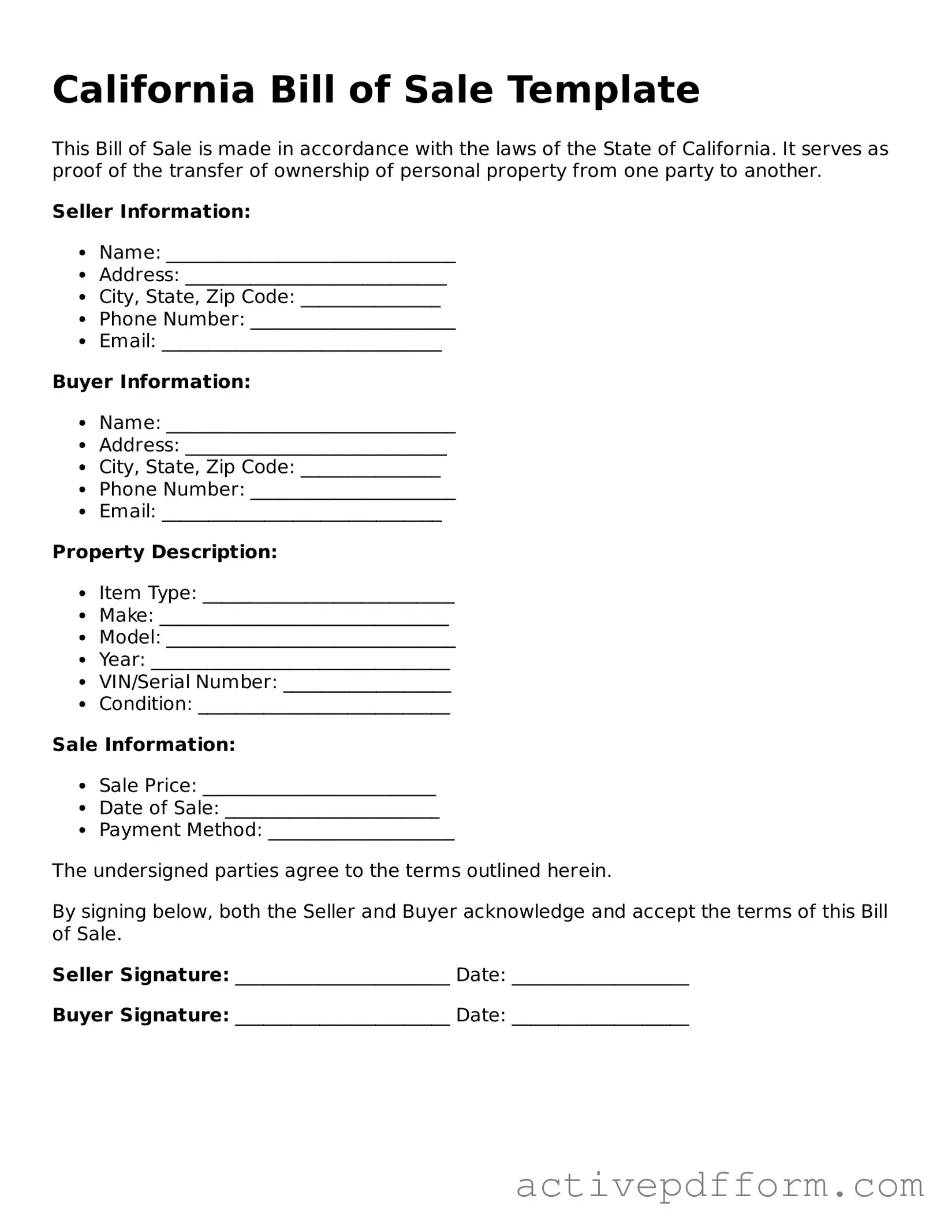What is a California Bill of Sale?
A California Bill of Sale is a legal document that records the transfer of ownership of personal property from one party to another. It serves as proof of the transaction and can be used for various items, including vehicles, boats, and other personal property. This document outlines the details of the sale, such as the item description, sale price, and the names of both the buyer and seller.
Is a Bill of Sale required in California?
While a Bill of Sale is not legally required for all transactions in California, it is highly recommended. For vehicle sales, the California Department of Motor Vehicles (DMV) requires a Bill of Sale when transferring ownership. Having this document can help protect both parties in the event of disputes regarding the sale.
What information should be included in a California Bill of Sale?
A complete Bill of Sale should include several key pieces of information. This includes the full names and addresses of both the buyer and seller, a detailed description of the item being sold (including make, model, and VIN for vehicles), the sale price, the date of the transaction, and any warranties or guarantees provided by the seller. Signatures from both parties are also essential to validate the document.
Can a Bill of Sale be used for a vehicle in California?
Yes, a Bill of Sale can be used for vehicle transactions in California. It serves as proof of the sale and is necessary for the buyer to register the vehicle with the DMV. The seller must provide the buyer with a signed Bill of Sale, which the buyer will need to present when applying for a new title and registration.
How do I create a Bill of Sale in California?
Creating a Bill of Sale in California can be straightforward. You can find templates online or create your own document. Ensure that it includes all required information, such as the parties' names, item description, sale price, and signatures. Once completed, both parties should keep a copy for their records.
Is a notarized Bill of Sale necessary in California?
A notarized Bill of Sale is not required in California for most transactions. However, having the document notarized can add an extra layer of security and authenticity, especially for high-value items. It may also be beneficial if there is a possibility of disputes in the future.
What should I do if I lose my Bill of Sale?
If you lose your Bill of Sale, it is advisable to contact the other party involved in the transaction. They may be able to provide you with a copy or help you recreate the document. If the item is a vehicle, you can also reach out to the DMV for guidance on how to proceed with the registration or title transfer without the original Bill of Sale.
